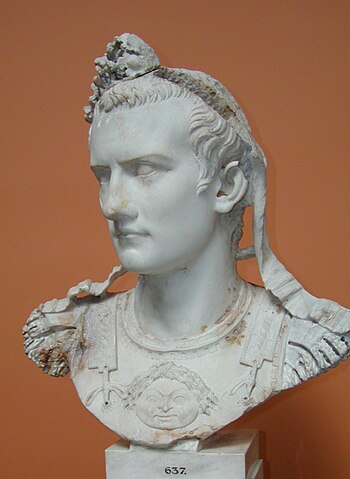What is the 'Abomination of Desolation' in Jesus prophecy?
 |
| Emperor Caligula, Ny Carlsberg Glyptotek. (Photo credit: Wikipedia) |
- Some point out that Jesus’ prophecy of the “abomination of desolation” standing in the temple was nearly fulfilled in the attempt of emperor Gaius Caligula, who insisted on receiving divine honors, to set up his image in the temple.
- Some argue that Jesus’ prophecy was fulfilled in the occupation of the temple mount by the leaders of the Zealot movement who usurped the high priesthood.
- Some suggest that Jesus’ prophecy was fulfilled when the Roman commander (and later emperor) Titus entered the temple, set up the Roman standards in the temple court complete with attendant sacrifices, and subsequently destroyed the temple.
Whatever the specific event, connecting “the abomination of desolation” with the events in A.D. 70 (and the destruction of Jerusalem and the temple) is the most plausible interpretation.
Some argue that the prophecy has not (yet) been fulfilled. If correct, this would mean one of three things:
(1) Jesus’ prophecy was never fulfilled, although some events could qualify as partial fulfillments.
(2) Jesus’ prophecy will be fulfilled in the future, in a third temple that will be built (note, however, that New Testament prophecy nowhere suggests that a third temple will be built).
(3) Jesus’ prophecy will be fulfilled in the future when someone will appear who claims divine authority—not in a literal “temple” in which the “abomination of desolation” stands, but metaphorically in terms of his demand for absolute obedience.
Since Jesus himself does not know the time of his second coming, Satan does not know the time either.
This means one of two things for the concept of the Antichrist.
1. If the Antichrist is a figure of history, we would have to conclude that Satan has an evil person “ready” in every generation who would deceive and persecute, and that the devastating effects of his actions could manifest themselves very quickly.
2. Jesus’ repeated emphasis that he will come unexpectedly and suddenly suggests, however, that Christians will not be certain whether this man is indeed “the” Antichrist.
3. If the antichrist is a symbolic figure for the evil forces that set themselves up against God, disputing God’s authority, ridiculing Christ, and persecuting Christians, then Jesus’ second coming is not tied to the appearance of a particular evil person. After the destruction of Jerusalem in the first century, an event that fulfilled Jesus’ one specific prediction, Jesus’ return could take place in any generation, unexpectedly and suddenly.
Schnabel, E. J. (2011). 40 Questions about the End Times. (B. L. Merkle, Ed.) (pp. 156–157). Grand Rapids, MI: Kregel Academic & Professional.
Schnabel, E. J. (2011). 40 Questions about the End Times. (B. L. Merkle, Ed.) (pp. 156–157). Grand Rapids, MI: Kregel Academic & Professional.

